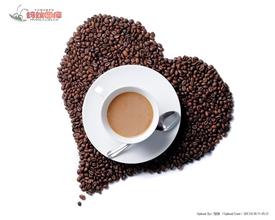Introduction to the characteristics of Panamanian Fine Coffee beans with sour and floral flavor
Panama is located on the Panamanian isthmus in Central America, bounded by Colombia to the east and the Pacific Ocean to the south.
It is bordered by Costa Rica to the west and the Caribbean to the north. The territory is S-shaped to connect North and South America, and the Panama Canal connects the Atlantic and Pacific oceans from north to south. It is known as the "bridge of the world". [5] Panama has a land area of 75517 square kilometers, a land length of 772km and a width of between 60km and 177km. The coastline is 2988 kilometers long and the land boundary is 555 kilometers long. In terms of longitude and latitude, Panama is located between 7 °and 10 °north latitude and 77 °to 83 °west longitude: cultivated land accounts for 8.9%, permanent pastures account for 20.0%, forests and woodland account for 43.0%, and others account for 28.1%. Per capita arable land 0.6 acres. [2]
Mineral resources
Panama is rich in mineral resources, but it is not exploited much, and the scale of the mine is small. The main minerals are gold, silver, copper, iron, mercury, bauxite, manganese, salt, oil and so on. The reserves of copper, salt and bauxite are relatively large. As of 2013, Panama has more than 200 million tons of copper ore, ranking fourth in the world. The proven copper reserves can be exploited for 50 years. The national emblem of Panama was launched in 1904 by a brown eagle with its head held high and its wings spread.
It stands on the national emblem with a white ribbon with the Panamanian motto "for the benefit of the world". In the middle of the national emblem is the brown isthmus of Panama, the blue Pacific and Caribbean seas, and the Panama Canal that connects them; under the blue sky, a bright moon has risen, the corresponding sunset is still shining in all directions, symbolizing the arrival of Panama's independence "at sunset and moonrise"; the silver sword and rifle crossed on the upper left have experienced the ups and downs of hundreds of years of war on Panamanian land. The T-pick and shovel on the upper right represent the country's call for active construction and hard work; the sheep's horn overflowing with gold coins and the golden two-winged flywheel symbolize the progress and prosperity of the country. Four national flags are decorated around the national emblem, and the top nine golden five-pointed stars represent the nine provinces of Panama
Panama is a small country located in the center of the American continent. The waters of the Atlantic and Pacific oceans flood its beaches.
Panama is located at 9 degrees north latitude, the meeting point of the Central Mountains, where Mount Baru, one of the highest volcanoes in Central America, is located.
The Baru volcano has an altitude of more than 11400 feet, and the land around it is rich in nutritious and fertile soil, providing sufficient conditions for the sowing and cultivation of coffee endemic to Panama.
The appropriate microclimate, soil, temperature and height of these highlands are suitable for sowing, planting and harvesting a variety of unique coffees. These coffees have jasmine, citrus, ripe fruit, berries, caramel, special sweetness, vanilla, chocolate and other flavors.
Unique coffee
Panamanian coffee is classified and numbered into small batches, which are designed to have a small capacity for optimal management, and classification numbers allow buyers to understand and track the entire process.
Because of its small quantity, Panamanian coffee products are based on special coffee. The country provides its high-quality products to specialized stores around the world, such as Denmark, the United Kingdom, Greece, Norway, Sweden, South Korea, Japan, Taiwan Province of China and the Panamanian Highlands of the United States. The microclimate is the most important resource that makes Panamanian coffee unique. The most important resource that makes Panamanian coffee unique is its microclimate. The east-west environment of the Republic of Panama converges cold air over 6500 feet through the Central Mountains, creating a variety of microclimates in the Boquete and Volc á n-Candela regions, making it a major source of Panamanian coffee. These specialty coffees are grown in the nutritious and balanced land of the Baru Volcano region. Panamanian coffee is famous for the rosy summer of the Jade Manor, which is also famous for its Boquete region in the province of Chiriqui. Boquete is a town in Chiriqui, Ricki province, located near the border between Panama and Costa Rica, close to the famous Baru Baru volcano, scenic scenery, rich soil, climate and soil are very suitable for producing quality coffee. In such a unique planting environment of Pokuit, there is naturally not only the emerald rose summer, which is not cheap in terms of flavor, quality and value. But I think it is quite extravagant to drink rose summer every day, and even if there is no financial pressure, it is not like eating shark's fin and bear's paw every day. The same is true of coffee, to dabble widely in order to enjoy the pleasure of tasting coffee, then in the land of Pokuit, there is a very cost-effective bean. And it has a very beautiful name-Flower Butterfly. She has 40% high-quality Rosa pedigree, which is composed of Rosa, Kaddura and Kaduai. It is planted in the Baru volcano region of Pokut and grows in the volcanic area at an altitude of 1600 meters. The treatment plant uses fine washing treatment. Panama's special local microclimate leads to abundant rainfall in this area, and a large temperature difference between day and night, coupled with the unique volcanic rock and soil of the volcanic area, as well as meticulous harvesting and fine treatment. It makes this coffee perform well in terms of firmness, acidity and floral aroma.

Important Notice :
前街咖啡 FrontStreet Coffee has moved to new addredd:
FrontStreet Coffee Address: 315,Donghua East Road,GuangZhou
Tel:020 38364473
- Prev

There are hundreds of different kinds of coffee. Have you heard of bulletproof coffee?
There are hundreds of kinds of coffee. Have you ever heard of bulletproof coffee? Silicon Valley entrepreneur Dave Asprey invented bulletproof coffee, inspired by Xizang butter tea, coffee with cream, this strong alcohol flavor who can stand! Still eating replacement bags? Then you're behind! Bulletproof coffee with added cream and coconut oil is popular, not only with strong
- Next

Introduction to the manor producing area of Costa Rican boutique coffee beans with unique strong flavor
Coffee was introduced into Costa Rica from Cuba in 1729. Today, its coffee industry is one of the well-organized industries in the world, with a yield of 1700 kg per hectare. Costa Rica has only 3.5 million people but 400m coffee trees, and coffee exports account for 25 per cent of the country's total exports. The volcanic soil of Costa Rica is very fertile and well drained, especially in the central part.
Related
- Detailed explanation of Jadeite planting Land in Panamanian Jadeite Manor introduction to the grading system of Jadeite competitive bidding, Red bid, Green bid and Rose Summer
- Story of Coffee planting in Brenka region of Costa Rica Stonehenge Manor anaerobic heavy honey treatment of flavor mouth
- What's on the barrel of Blue Mountain Coffee beans?
- Can American coffee also pull flowers? How to use hot American style to pull out a good-looking pattern?
- Can you make a cold extract with coffee beans? What is the right proportion for cold-extracted coffee formula?
- Indonesian PWN Gold Mandrine Coffee Origin Features Flavor How to Chong? Mandolin coffee is American.
- A brief introduction to the flavor characteristics of Brazilian yellow bourbon coffee beans
- What is the effect of different water quality on the flavor of cold-extracted coffee? What kind of water is best for brewing coffee?
- Why do you think of Rose Summer whenever you mention Panamanian coffee?
- Introduction to the characteristics of authentic blue mountain coffee bean producing areas? What is the CIB Coffee Authority in Jamaica?

